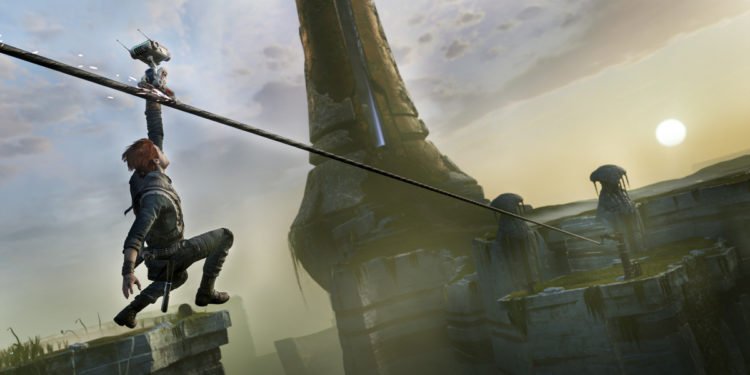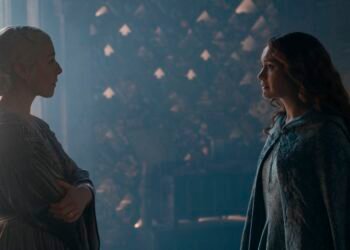Star Wars Jedi: Fallen Order isn’t what I expected from a Star Wars game, and that’s ultimately a very good thing.
I spend a lot of time with our hero, Cal Kestis, as he slides down funnels of ice — or hills of mud, on some planets — timing my jumps to get me to vines on which I can swing to another slide. It reminds me more of Crash Bandicoot than Dark Forces or Knights of the Old Republic.
This is because Fallen Order isn’t an action or role-playing game; it’s about exploration and discovery. The traversal is the entire point. There are many moments in the game that feel like Lara Croft or Nathan Drake was handed a lightsaber.
And I despise the game for my first few hours. I never watched the Star Wars movies and thought, How cool it would be to go rock climbing? I never wanted to be a Jedi so I could be alone with my thoughts and my droid, swinging on vines and collecting new ponchos.
It doesn’t help that Kestis is such a vanilla character, with little discernible personality. The crashes, frame rate issues, and time I spent getting stuck in the game’s geometry made it hard to even want to continue, much less enjoy myself.
And then, slowly, across the next few hours, I began to warm to Jedi: Fallen Order, and then finally enjoy its charms, despite its flaws. It becomes one of the more interesting stories we’ve seen in a Star Wars game, with enough twists and surprises to snare anyone who is a fan of the lore.
There is no order
Cal Kestis was a padawan — an apprentice Jedi — when Emperor Palpatine sent out Order 66, a command that began the Great Jedi Purge, wiping out the vast majority of the Jedi order in a few minutes. Kestis is forced to hide in a shipyard until he finds that he’s being hunted by the Empire, near the same time he learns of a possible way to bring the Jedi back to the power they once enjoyed. But the Empire also has a few new ideas for how to track, and ultimately kill, the last remaining Jedi, and it begins to race Kestis for control of an object of great power.
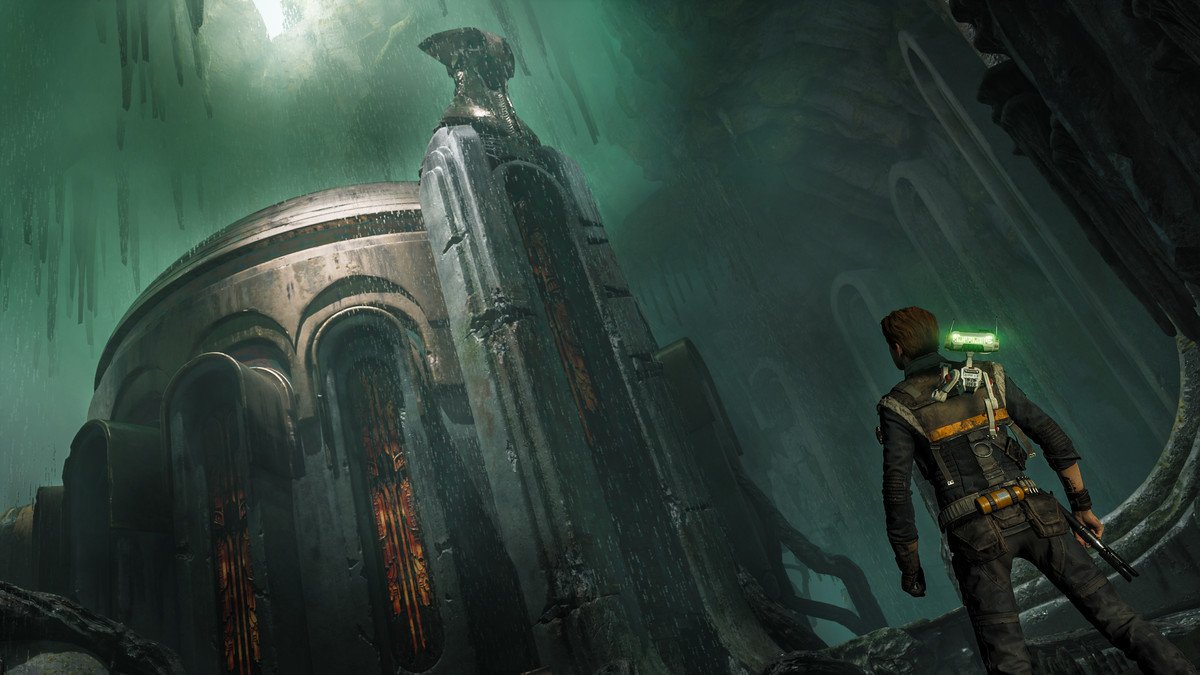
Jedi: Fallen Order answers the question of what happens to some of the few surviving Jedi, and their apprentices, when their support structure and governmental authority is wiped out. Suddenly, fighting with a lightsaber is nothing but an advertisement for their own death. Doing what it takes to survive in that environment is a major theme of the game, along with trying to make things better for the Jedi, if such a thing is even possible.
Kestis is after a MacGuffin that may help him reclaim the Jedi order and restore it to some form of power. He’s helped by a ship filled with the standard ragtag selection of gamblers and outcasts from the Star Wars universe, as well as a helpful and adorable droid named BD-1 who operates as his companion. BD-1 is played by Ben Burtt (the actual sound designer for the Star Wars movies) and has more personality and expression in his animation and vocalizations than Kestis is ever able to provide.
In fact, all the side characters in the game are more interesting than Kestis, with their own failures, triumphs, and arcs that make me wish more time was spent on them instead of the bland hero we’re stuck with. This is often a problem with mainline Star Wars properties, although the most recent films have done a much better job of not just focusing on the one chosen dude who comes from nowhere and is great because we’re told he is. Kestis is a bit of a step backward, but at least the supporting cast and those you meet along the way are much more memorable than this eternally confused blank slate.
Tomb Raiding and lightsaber fighting
What I actually do in Fallen Order is travel to a variety of planets, raid tombs, explore jungles, swim under the legs of AT-ATs, and try to stay one step ahead of the Empire. My companions stay in the ship during my adventures, for the most part, and it’s up to me to explore each area to find clues about the next step in my quest.
The most pressing challenge is almost always trying to figure out how to get from point A to point B, which is a refreshing shift for the Star Wars universe. There are battles, and some of them are glorious, but the vast majority of my time is spent solving puzzles and exploring, not fighting. I learn not to worry if I can’t find all the secrets or access all the areas on each planet, because I can always go back when I’ve unlocked a new Force ability or a higher jump to see more of each biome. It’s a structure, and pace, that often feels lifted from Metroid games, in fact.
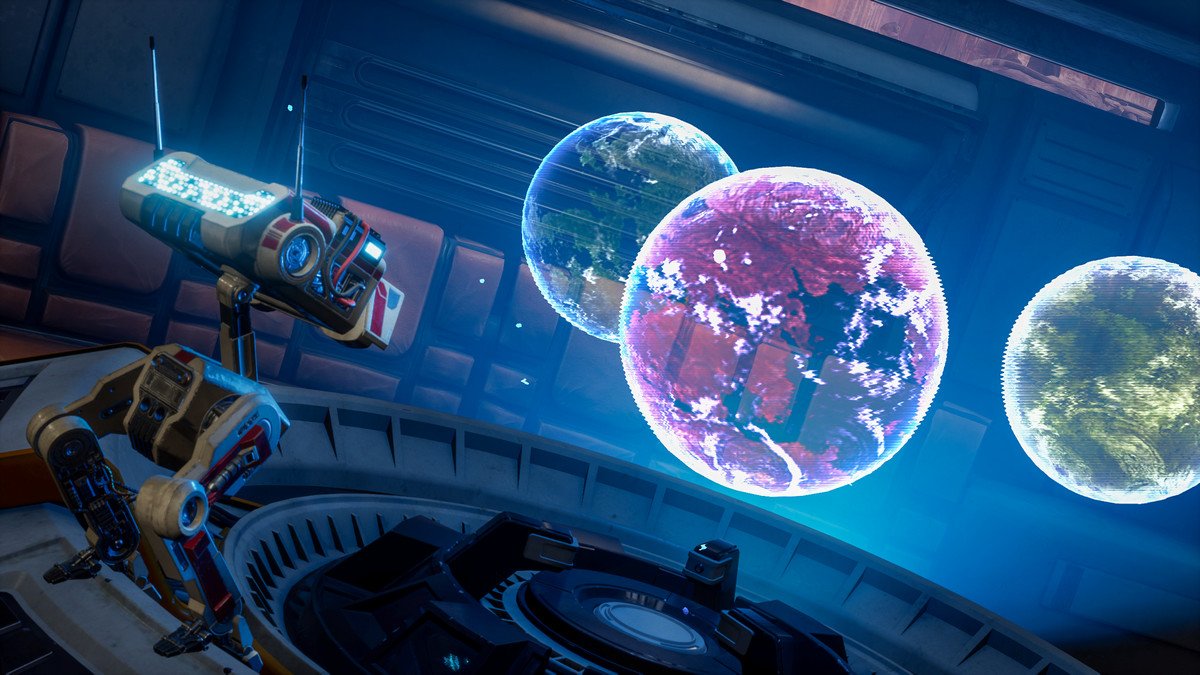
This is all held back somewhat by technical issues, which plagued the game during the week I was playing before its release. Jedi: Fallen Order crashed on my Xbox One X multiple times, and another Polygon staffer reported similar crashes on PlayStation 4. There were often issues with dropped frames, and I would sometimes become stuck in a level’s geometry, ultimately having to restart completely to escape. The first pre-release patch helped performance on the Xbox One somewhat, and an Electronic Arts representative said additional patches are on the way. But right now, Jedi: Fallen Order doesn’t provide the level of performance, or even basic playability at some points, that I expect from a game of this stature.
It definitely takes time for this structure to start working and paying off, although that payoff is there. I’m pleasantly surprised at how satisfying the game becomes once I unlock a few upgrades and gain a greater mastery of my powers, making it possible to explore more of the map.
And the more I explore, the better it gets. Jedi: Fallen Order begins to give up the grand, epic set-pieces that I want from a Star Wars game as I continue, including a stunning battle in which I lay siege to an AT-AT in a scene that feels like something out of Shadow of the Colossus. The smart mixture of exploration, classically designed puzzles built into huge underground or jungle-based structures, and Star Wars lore works far better than the first hour or two would indicate. And exploring each world to find every secret and aesthetic upgrade once you have all your abilities is surprisingly enjoyable.
I also felt like I was being played with somewhat. In the aforementioned Shadow of the Colossus-like battle, the game briefly put me on a speeder bike … and promptly asked me to hop off, since it can’t be ridden. Why tease us with something like that?
Anyway, Jedi: Fallen Order is a game about traveling through space on your own ship, trying to find your place in the galaxy, and exploring isolated, hard-to-reach environments through a variety of traversal options. Combat must take a back seat, right?
No, it certainly doesn’t.
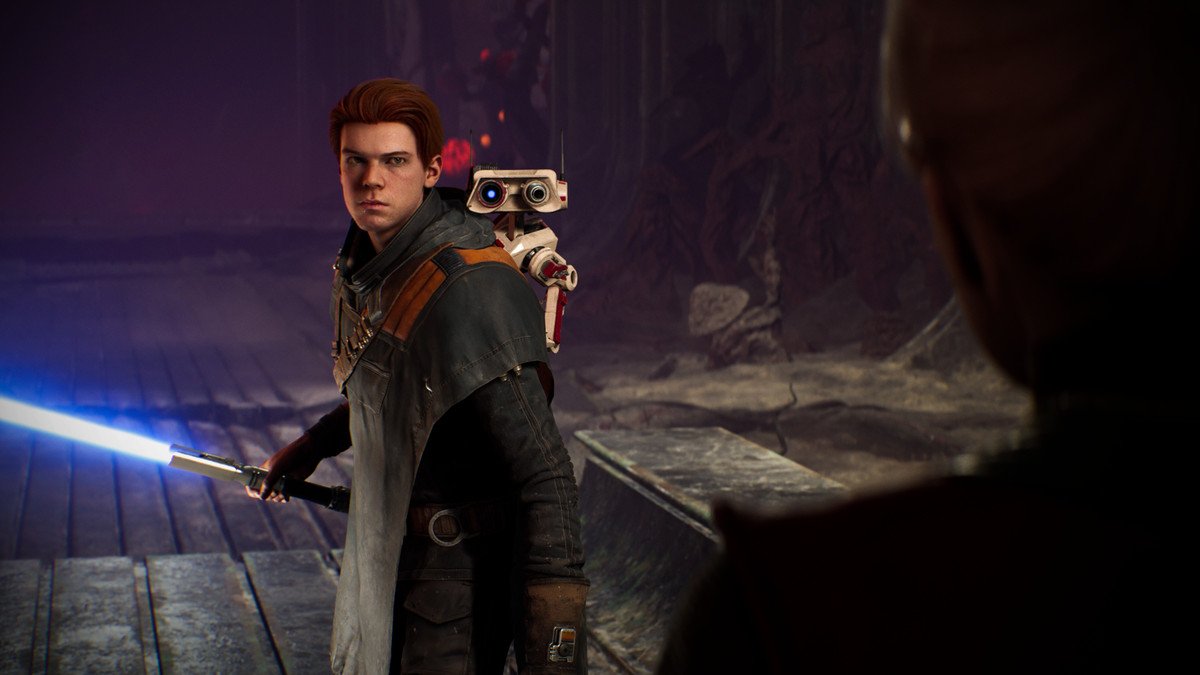
Respawn Entertainment/Electronic Arts
When you were swinging on vines, I was studying the blade
Combat is a bit dull, at first. All I have to work with are strikes, blocks, and rolls to escape attacks. It’s rote, despite the inherent fun of wielding a glowing laser sword.
But as I gain skill points and unlock abilities that expand what Kestis is capable of, I begin to feel not only competent, but dangerous. I can lock onto a single enemy and circle them, waiting for them to attack so I can roll out of the way and counter. I can use the Force to push a stormtrooper, screaming, off a cliff. I can slow down their attacks and move into a better position. I can pull enemies toward me, and then throw them back at their friends to break up groups. I can deflect blaster bolts with my lightsaber in between direct attacks.
Juggling various attacks with different lightsaber styles, while paying attention to the limited amount of Force energy I have, is challenging but doable. Simple button presses for attacks make sense tactically, while the actual in-game animations make everything look fluid and choreographed. I have options; how I choose to fight is up to me, and it changes depending on the situation and the number of enemies. And those enemies ratchet up in intensity, from local wild animals to stormtroopers to specially trained anti-Jedi forces and then … well, I’d rather not spoil it.
And the Empire was right to send enemies of this stature after me, because I become that monstrous of a threat.
By the end of the game, I’m a killing machine, with a huge range of options when it comes to messing up anyone who crosses me. And the fan service doesn’t stop there; Jedi: Fallen Order features one of the best lightsaber customization systems I’ve ever seen in a game, giving me the chance to pick the color of my blade, the material that makes up the hilt and its color, the emitters, the grips, and more. I unlock more and more options for my blade, and spend an embarrassing amount of time playing lightsaber dress-up and searching for more options for my blade.
And then blades.
Learning the ins and outs of the combat system is mandatory, unless I decide to play on the story-focused difficulty level. There are some long, technically challenging duels and battles throughout the game, including a few grueling moments where waves and waves of enemies are thrown at me. Learning how to finish off my equal in combat is satisfying, but Jedi: Fallen Order often relies on number of enemies for its challenge, which is less interesting.
I skip a few of these moments by dropping down the difficulty level, and the game remains fun when I keep the challenge focused on exploration and cut through battalions of stormtroopers as if they were so much fodder. Even on the harder settings, learning how to double-jump through the air and run across a steel wall on an Imperial base before killing a stormtrooper with one blow — as one long, fluid action — feels amazing.
Which helps, because the way Jedi: Fallen Order handles death is strange, and doesn’t seem to serve much of a narrative purpose.

Respawn Entertainment/Electronic Arts
I gain experience by killing enemies, scanning the environment with BD-1, and completing missions. Leveling up gives me points to use in the skill tree when I find glowing circles on which I meditate. But if I die before getting to one of these meditation spots, which let me cash in my character points, I lose those upgrade points as well as any experience I had built up.
To retrieve those resources, I need to spawn at the last save point, find the enemy that killed me, and then hit them again. I’m not sure what part of being a Jedi this Dark Souls-inspired death mechanic is supposed to simulate, but it feels strangely out of place in this game.
The problem with prequels
It’s not a spoiler to say that through all the Star Wars content available to date, we’ve never heard the name Cal Kestis. The Jedi are not reformed in the most recent Star Wars films, which take place after the events of this game. He’s going to fail in his task, and maybe die trying.
So how do you create a story with actual stakes when we know the ultimate outcome of the quest? Jedi: Fallen Order mostly succeeds in pulling this off, and packs enough surprises to allow me to forget that I already know Kestis is bound to fail. Although it’s trodding on somewhat known ground now, one of the most satisfying reveals during the game’s finale is both ridiculously exciting and legitimately frightening. I may feel like a powerful Jedi by the end, but the truth is, I’m still a kid with a lightsaber, and being reminded of that fact offers a satisfying payoff. There are much more powerful forces out there, and they’re keenly aware of who I am and what I’m doing.
Setting a story with this much scope in this time period of Star Wars is a bold choice, and it forces these characters to make interesting decisions about how to move forward in a galaxy where everyone is out to get them — although what they do, and how they do it, is out of my control completely.

Jedi: Fallen Order isn’t a game with decisions; it’s a linear narrative with enough juice to keep my interest until the credits. There’s nothing better for melodrama than to put your characters in the most desperate situation of their lives, and Order 66 certainly does that for the Jedi. What would you do if you were being hunted by the government after years of service? What would you give up, or what power would you reach for?
Who would you betray?
This all happens in a game with so much sliding on mud and ice, and with puzzles that feel taken from adventure games in the PlayStation 2 era. It takes me a few hours to get into the swing of what Jedi: Fallen Order is trying to do, and there are a few weird odds and ends that seem strangely underbaked, but that’s almost to be expected in a game that takes such a recognizable universe and does something this unexpected with it.
This is one of the most exciting things about Jedi: Fallen Order. We’ve had so many Star Wars experiences that were first-person shooters, or action games, or role-playing games, and of course all those mobile games. But this is a new idea for how Star Wars games can be structured, and shows how much room there is in this universe to experiment with new ideas of what we want to do in the land of the Jedi and the Empire.
Yes, there’s a lot about this game that’s awkward. But to do something different, you have to do something different, and that means it may take some time for a game to find its footing. Jedi: Fallen Order is enjoyable, with caveats about its performance and some aspects of its design attached, but it goes places I didn’t expect, and it gets there by a route I would never have considered. That’s a bold choice for a game this inherently commercial.
Jedi: Fallen Order is a flawed, sometimes messy game, but it’s a Star Wars experience I didn’t know I wanted. And after finishing it, I definitely want more.
Star Wars Jedi: Fallen Order is now available on PlayStation 4, Windows PC, and Xbox One. The game was reviewed using final “retail” download codes provided by Electronic Arts. You can find additional information about Polygon’s ethics policy here.



































